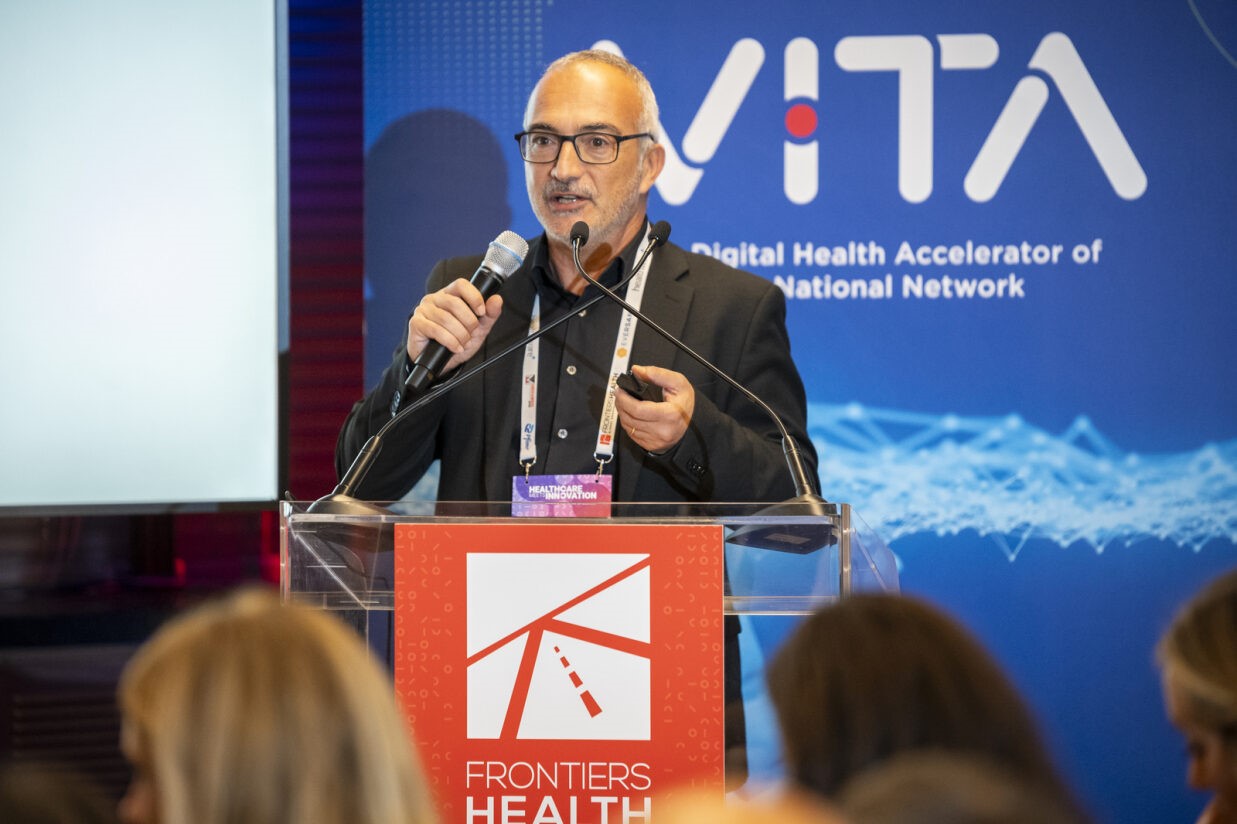Meet Our Alumni: BPCOmedia
At VITA Accelerator we're proud to support a new generation of digital health startups, accelerating both Italian and foreign startups willing to do business in Italy in cooperation with key Italian and international operators, investors and corporates.
As we continued these efforts with our 2023 cohort, we are now diving into each of our Alumni’s journeys, gaining insights into their transformative solutions, and how the acceleration program has helped take them to the next level. This time, we are sitting down with BPCOmedia’s, Co-founder & CEO, Giuseppe Capasso.
BPCOmedia is a spinoff of the Campus Bio-Medical University of Rome dealing with the prevention and control of exacerbations in COPD patients, through a CE0477 certified Class IIa medical device. It uses a patent AI algorithm to monitor a patient's health status and detect exacerbations or clinically critical situations that may lead to a worsening of the Chronic Obstructive Pulmonary Disease (COPD) patient's health.
How did your company come about and how do you envision your solution will change the current healthcare scenario?
COPD is a respiratory disease and the third leading cause of death in the world, defined as a public health issue by the World Health Organization affecting 380 million people worldwide.
The chronic and progressive course of COPD is frequently aggravated due to exacerbations, acute episodes of increased symptoms. In fact, it has been estimated that patients with moderate/severe COPD experience approximately 2-4 exacerbations per year. These exacerbations are the leading cause of hospitalization and death for people living with the disease.
The early detection of exacerbations is important to improve the management and prognosis when these events occur. Currently, there is no established methodology; however, there is a growing scientific imperative to identify parameters that effectively determine the best time for intervention.
BPCOmedia is the first patented and certified device designed for early diagnosis of exacerbations with an accuracy of rate of 98.4%, sensitivity of 92.9%, and specificity of 99.3%.
The device consists of:
- A pulse oximeter connected to a smartphone,
- A CE Certified APP available both on Android and iOS platforms, necessitating the patient’s acquisition of 3 daily measurements.
- A remote interface allowing healthcare professionals to monitor patients’ measurements.
- An AI algorithm that enables the early detection of potentially dangerous events in patients with COPD, such as hypoxia, tachycardia, and exacerbations.
The patient must configure the device by taking measurements for 5 consecutive days using the pulse oximeter. This process allows the algorithm to characterize the patient's physiological pattern which coincides with his or her level of clinical stability. Daily measurements will be conducted, enabling the algorithm to verify any changes in the pattern that characterized the patient's clinical stability which serves as predictive indicators of instability/increased risk of exacerbations. The automatic system will alert the doctor and the patient, facilitating a faster medical check-up and/or implementation of the necessary measures.
How were you able to take your company to the next level during the VITA Accelerator Program?
Every startup, throughout its journey, has specific objectives, needs and strategies. To succeed, this path should be accurately analyzed with the support of key mentors in this space which is exactly what we were able to do during the VITA Acceleration program.
Through specific sessions and 1-1 meetings,we honed in on the optimal business model, refined our value proposition, identified the most strategic targets for a swift and effective go-to-market strategy, explored opportunities within the international market, navigated specific registration and reimbursement pathways for our device, and established contacts for tangible commercial negotiations both domestically and internationally.
Could you highlight some significant milestones or connections made? Which program sessions or events have been most beneficial for your company?
Thanks to VITA, we at BPCOmedia have arrived at an advanced phase as our product is ready to go to market, our IP strategy is well defined, we have obtained our certifications, and some strategic partnerships have already been established.
The expert mentors provided us with useful and effective support, identifying the methods and tools that we must leverage to achieve our goals through plenary sessions, interactive courses, targeted 1-1 sessions, and by proactive actions.
What’s next for your company?
On the commercial side, through partnerships with major players in technology and telecommunication, we are presenting new solutions. Both in the establishment of Regional Telemedicine Platforms and for the design, we test and implement a National Artificial Intelligence Platform for the support of primary healthcare.
Simultaneously, we are working to consolidate the Italian market, particularly within the public sector. Launching a wide range of sales strategies in this space, we have initiated several negotiations, some of which are in their closing phase.
Regarding the B2C market, our National Monitoring Center is slated to launch by the first half of 2024. This initiative is supported by the Scientific Society of the Italian Association of Hospital Pneumologists (AIPO-ITS) and different Patient Associations. Smaller scale initiatives designed for the care of COPD patients will start in Tuscany and Emilia-Romagna during the same timeframe.
In terms of research, we are publishing the results of the study Telemonitoring system for the early diagnosis of COPD exacerbations, and by February 2024 will initiate the study, Remote multiparametric telemonitoring for the management of COPD and heart failure in the elderly. A new version of the predictive algorithm has been identified, currently undergoing testing, and will be released in 2024.
We are actively pursuing another objective which involves defining, implementing and testing an algorithm for deriving respiratory function from the plethysmographic wave generated by the pulse oximeter.
By the end of March, we anticipate securing the new CE certification for class IIa medical devices in accordance with the recently implemented on Medical Device Regulation (MDR), which replaced the CE certification under the Medical Devices Directive (MDD).
More info at www.bpcomedia.it

